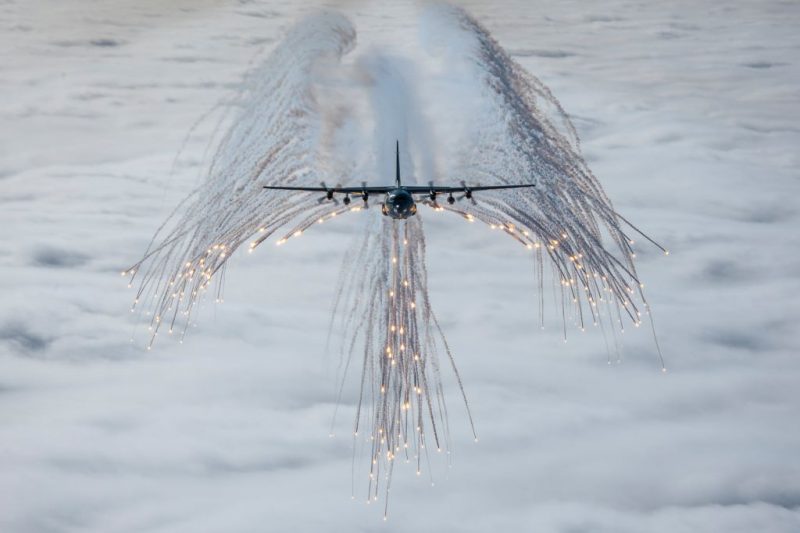The new self-protection device and sensors of the first Lockheed C-130K “Hercules” of the air forces of the Austrian Armed Forces were impressively tested this week above the Allentsteig military training area in the Waldviertel. The transport aircraft, which were now 2003 years old by the Royal Air Force in 53, have been overhauled and equipped with new avionics in recent years at Marshall Aerospace and Defense, a proven specialist in the modernization of military aircraft, in order to ensure safe use to continue to ensure in the coming years. This also includes the safest possible evacuation of soldiers or civilians under threat from crisis areas, as Brigadier Wolfgang Wagner, Commander of the Air Support Command, stated in a broadcast by the Federal Army. To make this possible, the C-130 air transport system will be further developed and the first of the three “Hercules” will be equipped with the new self-protection capability.
Together with passive sensors for the detection of radar, infrared and laser-controlled guided missiles, decoys - so-called “flares” - can in future be ejected in order to ensure the greatest possible self-protection for the “Hercules” of the armed forces. With the completion and first testing of the new security system above the Allentsteig military training area, the training of the crews in the appropriate procedures begins in order to be able to use this new capability accordingly. Subsequently, the two other Lockheed C-130Ks of the armed forces will also be equipped with the new self-protection system to enable full operational readiness.
The lack of a self-protection system, as it has been used by many other user nations of the most diverse derivatives of the Lockheed C-130 for decades, has long been a point of criticism from domestic military experts. With the acquisition of the new self-protection system, the air forces are now complying with this long-standing requirement in order to safely fly out soldiers or Austrian citizens on duty after terrorist attacks or other warlike escalations, e.g. Austrian vacationers from Egypt.

Lockheed C-130K Hercules in Linz-Hörsching 8T-CC (Photo: Michael David)
Recently the third and last “Hercules” returned from the modernization work and with a new coat of paint from England, so that all three transport aircraft with their home base in Linz-Hörsching are now available again. In addition to the supply flights for domestic soldiers in Kosovo, the machines are currently repeatedly used to bring Covid 19 patients abroad home, as well as within the framework of a partnership agreement for peaceful cooperation for other nations such as France or Denmark. The three “Hercules”, supplemented by a copy that was also taken over from the Royal Air Force in 2015 and stored in Linz-Hörsching for use as a spare part donor, are now among the armed forces' flying workhorses. The modernizations that have been carried out will ensure continued flight operations until 2030, but military experts are already starting the discussion about a possible successor model, such as a used Lockheed C-130J Hercules. The acquisition of new aircraft such as the Airbus A175M, which cost approx. 400 million euros, can be ruled out as completely unrealistic in view of the defense budget and numerous open replacement tasks in the Austrian armed forces.







 trail (for them it's free to use)
trail (for them it's free to use)